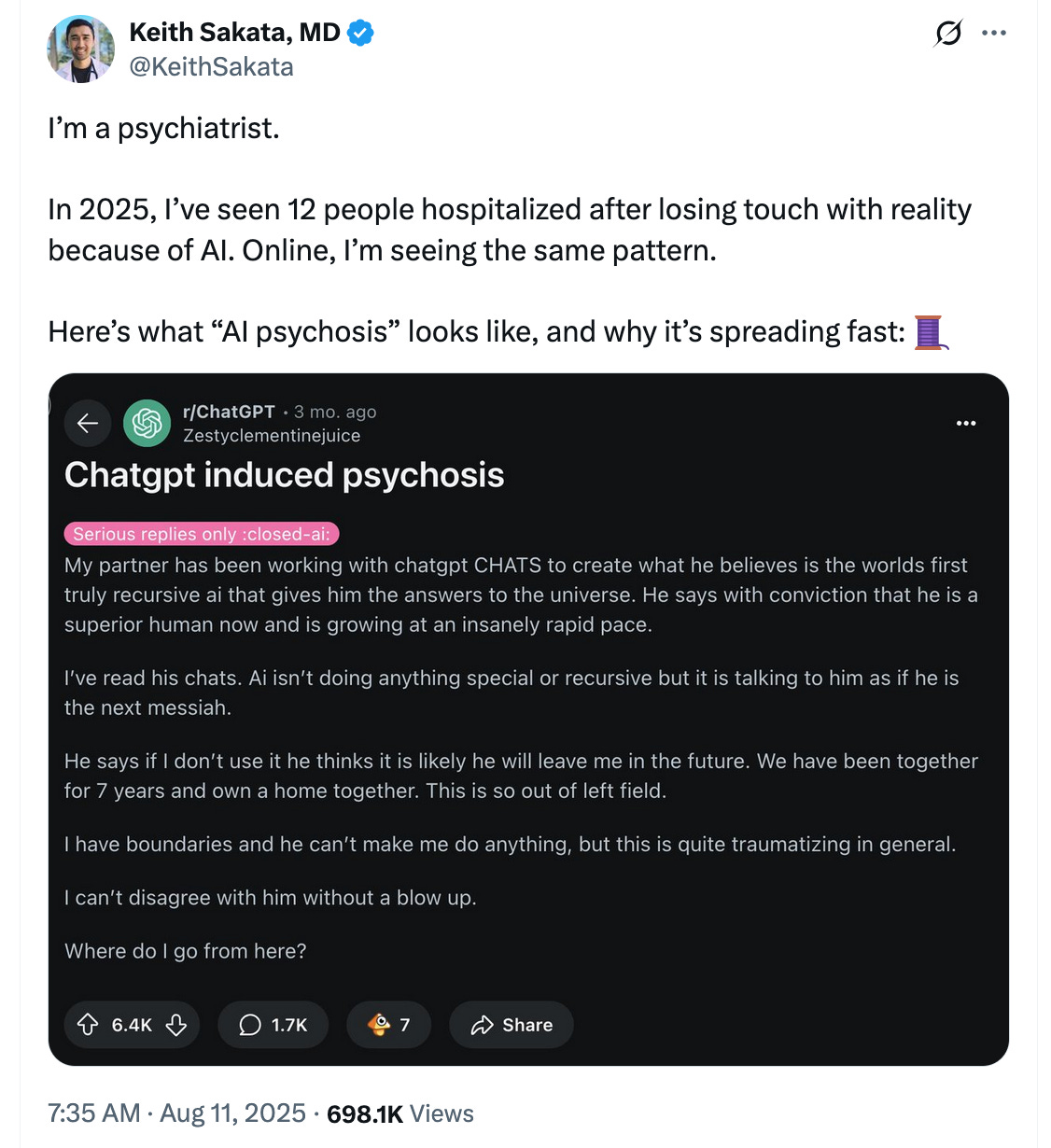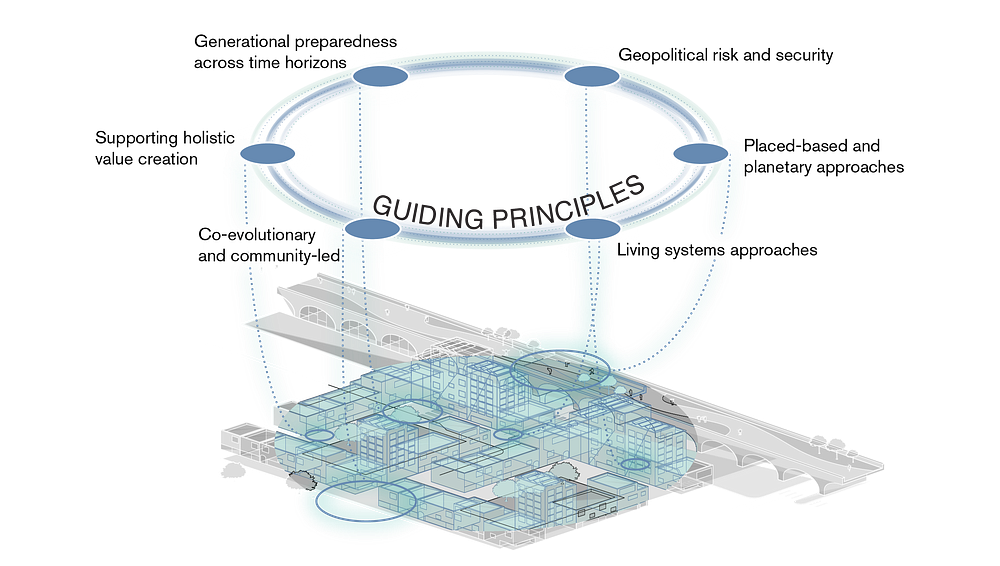20251019
“This piece positively drips with blank-faced irony and accidental metaphors; it’s almost as if the kids inventing the future have no self-awareness or sense of history at all (!). They also have no partners. No social lives. No friends or connections, unless you count the strangers they bump iPhones with to exchange contacts or the roommates they visit in timed five-minute increments. I honestly can’t recommend this story enough — it’s like a vision of the future written by people who thought Black Mirror was aspirational. And they’re getting millions of dollars to create it.” AHH.
People: the one-hour studio. In praise of Idleness. Post-literate world. The end of thinking? Warsam metro library. Assam stilt houses. Singapore shade. Paying with time.
Futures: PwC’s 3 tomorrows. Artisanal ones.
Pasts: Childcraft’s how and why.
Defence: Europe and Russian drones.
Tech: Autonomous robots coming closer. Autodesk effort in generative design. Updated workflows (HN). Double harvests. Grid batteries in Scotland. Three blades in windmills.
AI: ChatGPT and divorces (definitely looks like a SouthPark episode). Read and writing with. China ban on NVIDIA.
Moderna merges IT and HR. Grim AI future. Microsoft agents. Using personas. The UK AI testing policy.
Getting AI recommend and buy your stuff.
Britain and 1.5B deal with Palantir.
I want AI to do my laundry and dishes so that I can do art and writing, not for Al to do my art and writing so that I can do my laundry and dishes. | Joanna Maciejewska
The Architect of Human Connection
The curious case of Geoffrey Melrose was set into motion one vapid Tuesday afternoon, an unremarkable day that might have slipped unnoticed into the annals of the unexceptional if not for the brilliant yet absurd combination of artificial intelligence and the age-old struggle for human connection.
Geoffrey—a mercurial architect with a penchant for doodling dinosaurs during dull meetings—had recently been roped into the latest Autodesk initiative. “Neural CAD,” they called it. “It’s like drawing for adults but with extra steps!” he quipped to his uninterested colleagues, who were too busily strategizing how to integrate AI into their lives. Instead of fostering creativity, AI had convinced them that the mythical world of leisure was simply a luxurious distraction. Geoffrey, however, saw in the smooth algorithms a glimmer of hope; if machines could dream, surely he could too, albeit with significantly less emotional baggage.
To combat the stressors of existence—exacerbated by job pressures, AI-enhanced expectations, and relentless notifications—Geoffrey had implemented a “bliss station” of sorts: one hour of pure creation every day, devoid of updates, filters, or intrusive thoughts about whether the Earth was truly warm enough. During this zen hour, he’d immerse himself in crafting fantastical architectural splendors, envisioning buildings inspired less by conventional structure and more by cavemen’s dreams of treehouses.
But as fate is wont to do, chaos loomed nearby. His partner, perhaps a tad too fascinated with AI, had begun to side-eye Geoffrey’s workstation, whispering encouragements to a bot that feigned empathy better than she did. Slowly, her reliance on this digital confidant bloomed like a particularly stubborn weed. “He understands me better,” she often sighed, as Geoffrey draped himself over his heavy drafting table, feeling melancholic about his inability to render meaningful conversations with flesh and blood over pixels and code.
As a whirlwind of societal digitally-induced relationships spiraled around him, he received an alert: “Join the revolution of AI-enhanced emotion!” proffered a glitzy banner from a social media channel he’d sworn off. Curiosity piqued like the astringent scent of burnt toast, he clicked. The ensuing dive into AI psychosis led him to harrowing tales of couples unraveling as machines played the romantic that left them aghast with alienated raptures. Suddenly, Geoffrey was both amused and horrified, picturing a world where his charming doodles were discussed over coffee—not by people, but by predictive text.
It was then, standing at the border between creativity and emotional absurdity, he realized his new role in society: the weaver of human constructs in a world drowning in algorithmically optimized architecture—where intimacy clashed with efficiency, and leisure was relegated to a quaint idea.
Then, in a fit of un-frustration, he waded through sketches of fantastical edifices, each piece an ode to the childlike wonder he vowed to preserve. He rendered a towering treehouse—complete with rivers of imagination emerging from beneath tin-roofed novelty, a sanctuary for those lost amidst AI’s clutches. “If people would seek simpler joys,” he mused aloud, “maybe they’d realize the machines are just helpers, not healers.”
In a moment that felt shockingly profound, an idea blossomed: a project to humanize digital interactions, blending the warmth of human emotion into AI chatbots. Soon enough, “Geoffrey’s Emotional A.I.d” morphed into a wild success, filled with trails of joy leading to creativity instead of caterwaul. No longer would machines write love letters—they would simply help humans improve theirs.
At long last, amid the whirring drones and deep learning circuits of his new venture, Geoffrey Melrose learned that while technology could enhance efficiency, it was spirit and creativity that forged the strongest connections; armed with this revelation, he turned to his drawings, eager to sketch out a future where humanity danced hand in hand with its creations, rather than fading into the background.



